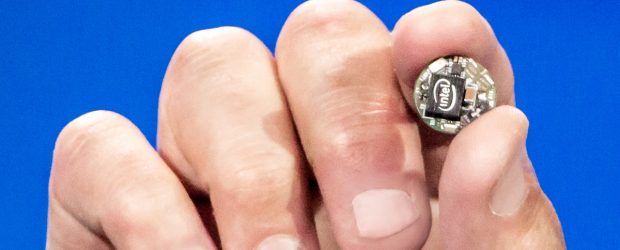Canadian businesses are poised for wider Internet of Things (IoT) adoption — but must first reshape parts of their operations to reap the full benefits, according to one industry analyst.
Speaking at the IDC Directions and Canadian CIO Symposium on Thursday, Nigel Wallis, director of IoT and vertical markets at IDC Canada, outlined how the power of the “3rd Platform” — which refers to advancements in mobile computing, social media, cloud computing, big data and IoT — can help drive IT innovation. Wallis noted that approximately 45 per cent of all SMEs in Canada have already deployed some form of non-consumer IoT device.
The annual Canadian ICT industry tech trends conference in Toronto — sponsored and supported by the IDC Canada, Information Technology Association of Canada (ITAC), and IT World Canada (ITWC) — brings together clients, analysts and industry experts for a full day of thought leadership, results sharing, and interactive discussions on the state of the technology landscape in Canada.
Although Canada typically trails behind global deployment rates for new technologies, these latest numbers suggest we’re no laggards on the IoT front, according to Wallis.
Smaller, cheaper sensors
The development of smaller, cheaper sensors that deliver better network connectivity and consume less power has lowered the barriers for many Canadian businesses to enter the IoT game, Wallis said.

As a result, more Canadian businesses are investing in IoT to compete in a marketplace where “everything and anything can be measured,” he said. The real value of IoT is the ability to collect user data from physical objects and transmit it – often automatically and in real time – back to businesses, he added.
“(It’s about) getting that data back somewhere else to be analyzed. Get more data and analyze it to make better decisions faster; take that data and turn it into valuable content you can sell,” Wallis said. “And when you have a connected product you can send that data back to your marketing team in real time.”
Business benefits
He described how IoT could revolutionize specific industry verticals like transportation. Airlines, for instance, can use sensors to track luggage more accurately at airports. Since airlines incur an average cost of about $100 for each lost bag, the technology could produce considerable savings for the air travel sector, Wallis said.
Some IoT benefits described by Wallis will be almost universal for many businesses regardless of industry sector. For example, receiving immediate notifications when equipment or products require servicing or upgrading could help companies reduce maintenance costs and boost customer satisfaction.

The ability to monitor consumption of electricity, heating, air conditioning and water in real time will also allow many organizations to save money on utility expenses. Wallis said that after businesses invest in IoT utility monitoring, it usually takes them three to five years to recoup that money via reduced energy costs.
While IoT will create new opportunities for businesses to cut costs, operate more efficiently and serve customers in a timelier, more relevant way, Wallis warned the technology will require many enterprises to make internal changes. In his estimation, marketing and sales departments will have to adjust to an environment where the impact of their efforts can be measured quicker and more accurately than ever before.
Partner ecosystem
In addition, buyers and sellers of connected goods and services will have to recognize that the emerging IoT “partner ecosystem is crucial” to their successful participation in the market, Wallis said. Without one unified platform for IoT applications and hardware, that ecosystem is still evolving, but companies such as Intel and Google are already vying to be frontrunners in the push towards standardization.
Then there’s the potential impact of self-driving cars on Canada’s labour market.
“Driving is the second most common occupation for Canadian males,” Wallis noted. That suggests employment could take a significant hit if (or when) IoT eliminates the need for human drivers in sectors involving trucking, taxis, buses, couriers, public transit and limousines, he said.
